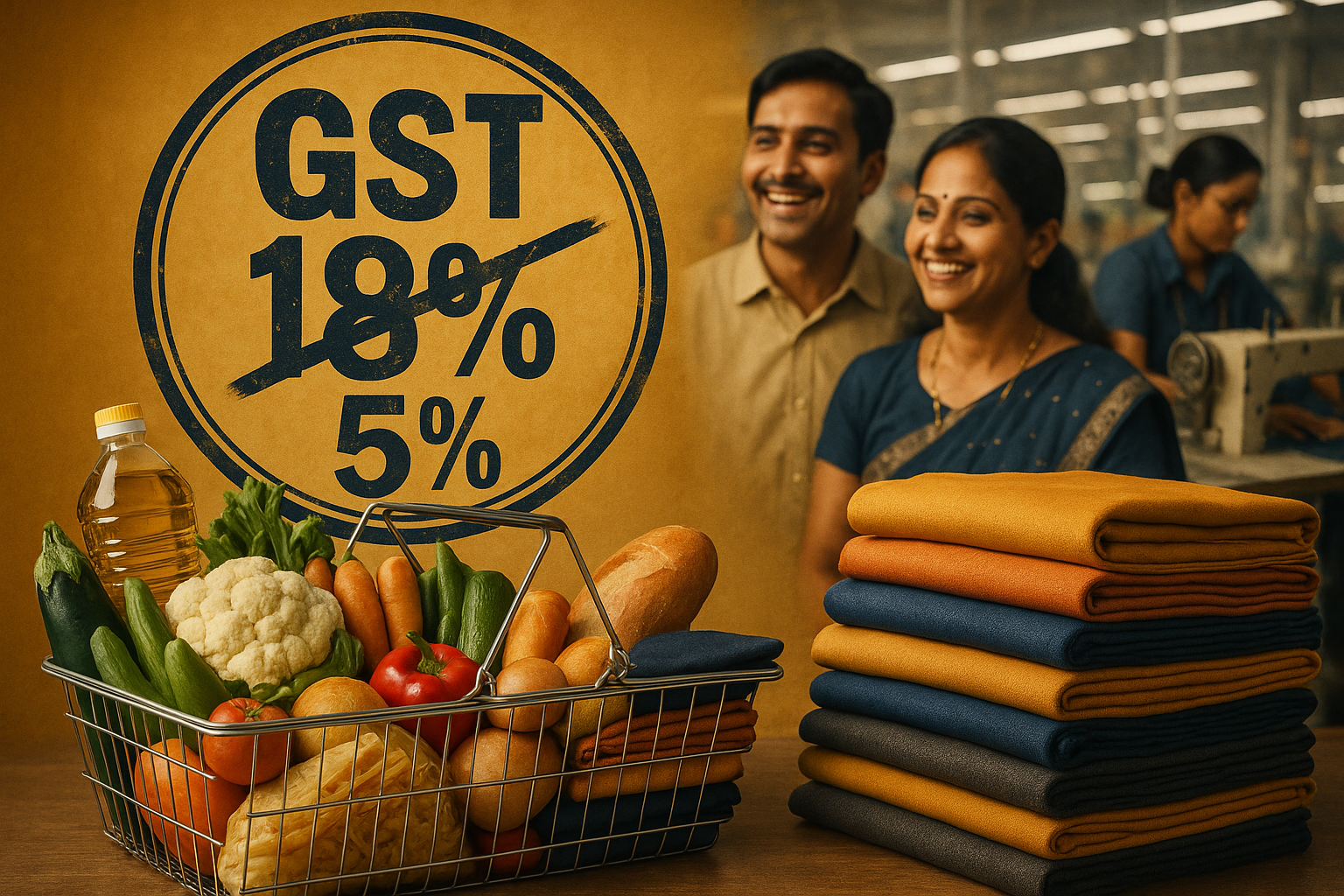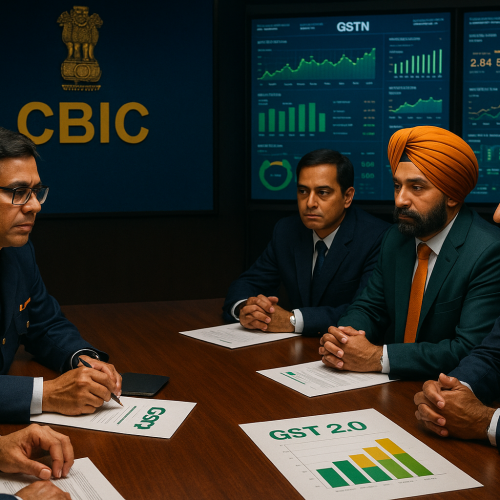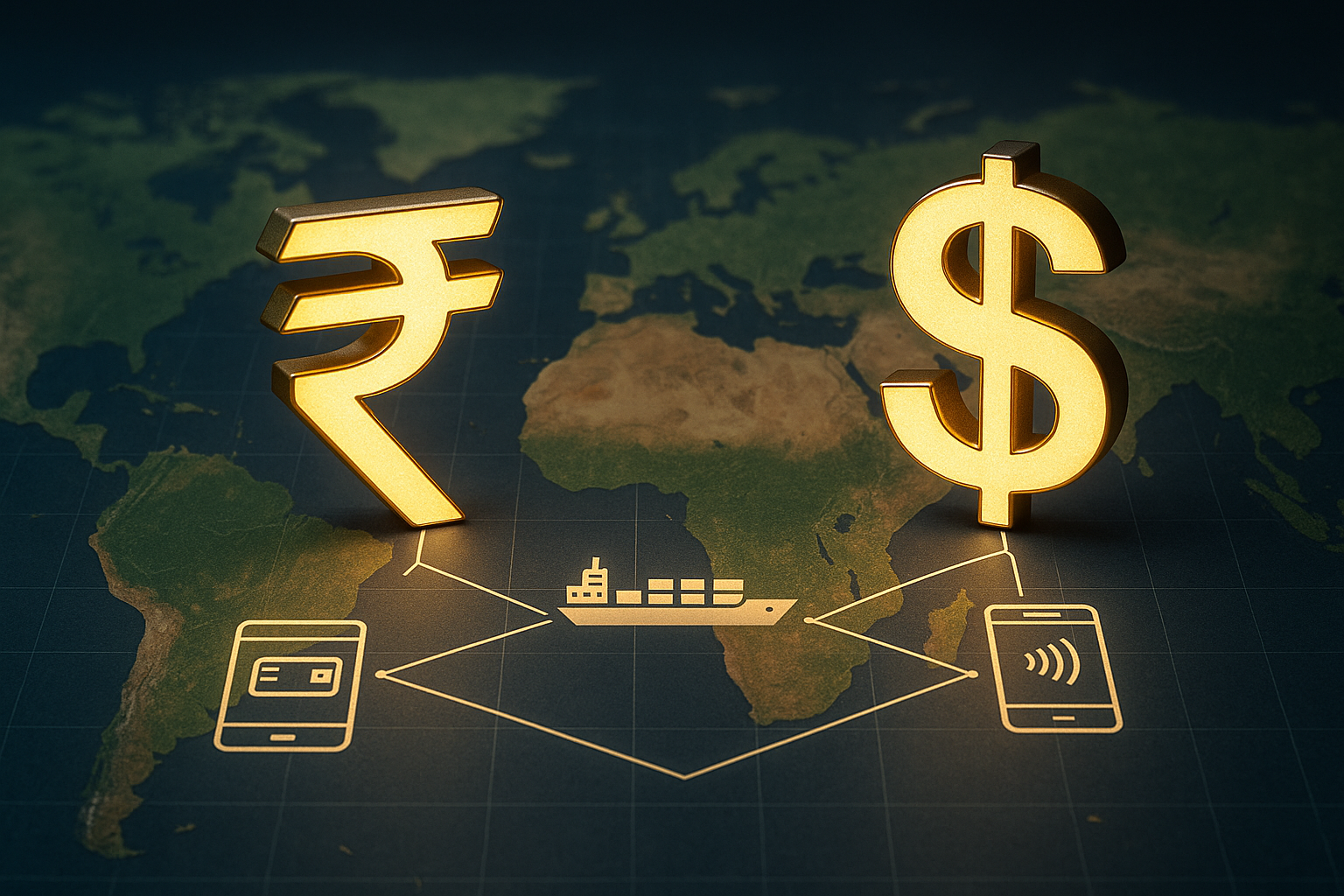The government is considering a major GST rate cut on food and textile items, aiming to ease the burden on households while boosting demand in two of India’s most critical consumption-driven sectors. The proposal is part of ongoing GST 2.0 reforms, designed to simplify tax structures and improve compliance.
If approved, the move could provide relief to millions of consumers, support the struggling textile sector, and enhance affordability of essential food products—aligning with the government’s broader Viksit Bharat 2047 vision.
Why the Focus on Food and Textiles
Food and textiles account for a large share of India’s consumption basket and are highly sensitive to price changes. Rising inflation in food and slowing demand in textiles have created pressure points for policymakers.
Cutting GST rates here would directly improve household purchasing power while giving textile manufacturers a demand-side boost, particularly in export-oriented clusters.
Industry Expectations
Industry associations have long demanded rationalization of GST rates in these sectors. The textile industry, a major employer in India, has been struggling with rising input costs and global demand uncertainty. A lower GST could ease working capital stress and improve competitiveness in global markets.
For food products, especially packaged essentials, reduced tax rates would help keep prices stable and encourage formalization of small businesses under GST.
Consumer Impact
For consumers, the immediate benefit would be reduced prices on everyday essentials. This aligns with the government’s push to make the GST framework more people-friendly while addressing inflationary concerns.
By lowering taxes on mass-consumption items, the government also signals its intent to make GST not just revenue-focused but growth and inclusion-oriented.
Why This Matters
The GST rate cut proposal reflects the government’s balancing act between revenue considerations and economic growth.
For Households: Relief from high prices of food essentials.
For Industry: Improved demand and competitiveness for textiles.
For Policy: A reform step that aligns with GST 2.0’s simplification agenda.
If implemented, the move could become one of the most impactful GST changes since the tax’s introduction in 2017.












